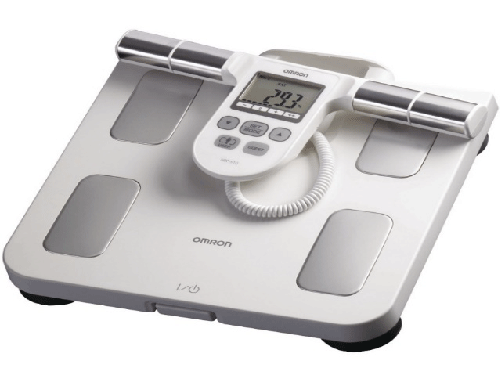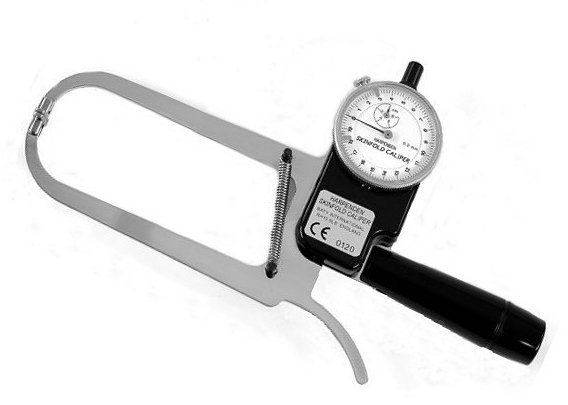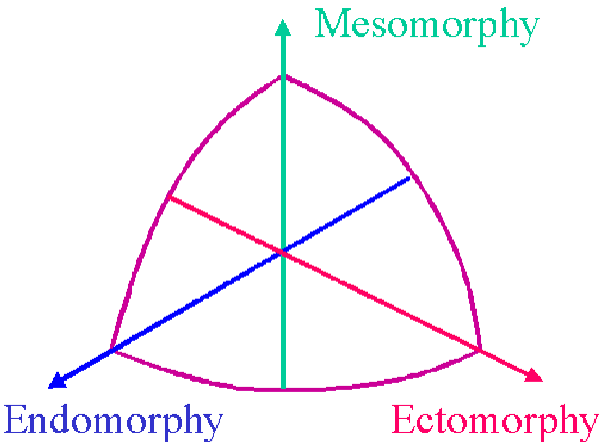Make the best use of Scientific Research and information from our 700+ peer reviewed, Open Access Journals that operates with the help of 50,000+ Editorial Board Members and esteemed reviewers and 1000+ Scientific associations in Medical, Clinical, Pharmaceutical, Engineering, Technology and Management Fields.
Meet Inspiring Speakers and Experts at our 3000+ Global Conferenceseries Events with over 600+ Conferences, 1200+ Symposiums and 1200+ Workshops on Medical, Pharma, Engineering, Science, Technology and Business
Image Open Access
Impact of Somatotype on Anthropometric Measurements of Body Fat distribution in Young Adult Population
| Rajajeyakumar M* | |
| Department of Physiology, Chennai Medical College Hospital and Research Centre, (SRM Group), Irungalur, Trichy-621105, Tamilnadu, India | |
| Corresponding Author : | Dr. Rajajeyakumar Manivel Assistant Professor, Department of Physiology Chennai Medical College Hospital & Research Centre (SRM Group) Irungalur, Trichy, Tamilnadu-621105, India Tel: 9751382650 E-mail: rajakumar60@gmail.com |
| Received: July 04, 2015 Accepted: July 15, 2015 Published: July 30, 2015 | |
| Citation: Rajajeyakumar M (2015) Impact of Somatotype on Anthropometric Measurements of Body Fat distribution in Young Adult Population. J Obes Weight Loss Ther S5:i001. doi:10.4172/2165-7904.S5-i001 | |
| Copyright: © 2015 Rajajeyakumar M. This is an open-access article distributed under the terms of the Creative Commons Attribution License, which permits unrestricted use, distribution, and reproduction in any medium, provided the original author and source are credited. | |
| Related article at Pubmed, Scholar Google | |
Visit for more related articles at Journal of Obesity & Weight Loss Therapy
Introduction
Kinanthropometry is defined as the study of human size, shape, proportion, composition, maturation, and gross function, in order to understand growth, exercise, performance, and nutrition [1]. It is a scientific discipline that is concerned with the measurement of the subjects in a different of morphological views, its application to components of body build like body measurements, proportions, composition, shape and maturation; motor abilities and cardiorespiratory capacities; physical activity as well as sports performance [2]. Anthropometry uses non-invasive, affordable and portable devices to calculate skinfolds, weight, height and body circumferences and diameters. These devices are simple, easy to use, allowing quick measurements that can be performed in large sample size. This measurement requires well trained personnel, standardization of the measurement, as well as, the appropriate calibration of the instruments.
Screening and Assessment
Before enrolling any patient in a weight-loss therapy, the physician should have a concise idea of that individual’s expectations. They should guide the obese patient who seeks weight loss therapy to develop the goals that fit the mnemonic SMART: Specific, Measurable, Attainable, Realistic, and Timely. Motivation regarding the changes in diet, exercise, and behavior required to maintain weight loss.
Methods
I.S.A.K.-International Society for the Advancement of Kinanthropometry [3] using prediction equations that is widely used and cross-validated.
Standardized Techniques should be
• Valid
• Calibration
• Reliable
• Measurement error
• Objectivity
The following parameters should be recorded
• Sitting height/standing height
• Shoulder width/hip width
• Thigh length/leg length
• Neck length/neck circumference
Standardized Techniques should be
• Valid
• Calibration
• Reliable
• Measurement error
• Objectivity
The following parameters should be recorded
• Sitting height/standing height
• Shoulder width/hip width
• Thigh length/leg length
• Neck length/neck circumference
Procedure
The following skinfolds were measured: Triceps (T), Subscapular (Sb), Suprailiac (Sp), Abdominal (A), Thigh Calf (TC) and Medial Calf (MC). Anthropometric measurements were performed according to ISAK standards. The qualified person should be performed independently each measurement twice, considering valid values when standard deviation of each measurement was lower than 7%. The following sums were considered for fat content calculations: six skinfolds (SSS=T+Sb+Sp+A+TC+MC), upper body skinfolds (SUBS=T+Sb), trunk skinfolds (STS=Sp+A) and lower body skinfolds (SLBS=TC+MC) [4] (Figures 1 and 2).
Clinical Importance of Heath-Carter Anthropometric Somatotype
The somatotype describes a particular category of body build, determined on the basis of certain physical characteristics (Bailey et al.). Endomorph is an individual having the type of body build in which tissues derived from the endoderm predominate. Endomorphy in which measurements of three skinfold thicknesses (triceps, subscapular, suprailiac) are combined to indicate the amount of fat in the body. It is corrected for height because the surface area-volume relationship changes with height. Ectomorph is an individual having a type of body build in which tissues derived with large surface area, thin muscles and subcutaneous tissue, and slightly developed digestive viscera, as contrasted with endomorph. Ectomorph in which measurements of height and mass are combined to provide an indication of "linearity". A cubic relationship (Ponderal Index) is used for the Heath-Carter Anthropometric Somatotype.
Mesomorph is an individual having a type of body build in which tissues derived from the mesoderm predominate. There is relative preponderance of muscle, bone, and connective tissue, usually with heavy, hard physique of rectangular outline. This somatotype is classified between the ectomorph and the endomorph. Mesomorphy in which measurements of bone diameters and muscle circumferences (corrected for skinfold thickness) are compared with the person's height to provide an indication of general musculoskeletal development. The three components of the Heath-Carter Anthropometric Somatotype are plotted in two dimensions on a cam-shaped "graph", called a somatochart. Plotting of the three somatotype components on a somatochart, and the normal adult variation is shown below (Figure 3).
The centre of the somatochart is "444" or"333" and represents the "unisex phantom", while the bottom left, endomorphy, corner, is "711", the top, mesomorphy, corner is "171", and the bottom right, ectomorphy, corner is "117". The typical adult male is "353" while the typical adult female is "543 (Bailey et al.) showed the following differences in somatotype.
Mesomorph is an individual having a type of body build in which tissues derived from the mesoderm predominate. There is relative preponderance of muscle, bone, and connective tissue, usually with heavy, hard physique of rectangular outline. This somatotype is classified between the ectomorph and the endomorph. Mesomorphy in which measurements of bone diameters and muscle circumferences (corrected for skinfold thickness) are compared with the person's height to provide an indication of general musculoskeletal development. The three components of the Heath-Carter Anthropometric Somatotype are plotted in two dimensions on a cam-shaped "graph", called a somatochart. Plotting of the three somatotype components on a somatochart, and the normal adult variation is shown below (Figure 3).
The centre of the somatochart is "444" or"333" and represents the "unisex phantom", while the bottom left, endomorphy, corner, is "711", the top, mesomorphy, corner is "171", and the bottom right, ectomorphy, corner is "117". The typical adult male is "353" while the typical adult female is "543 (Bailey et al.) showed the following differences in somatotype.
Conclusion and Recommendation
Newer technology, like Dual-Energy X-Ray Absorptiometry (DXA), Magnetic Resonance (MR) and Computerized Tomography (CT) are more reliable than anthropometry. In addition to that, they are very expensive and only available to a few research centers. On the other hand, anthropometry has a strong tool in estimating body fat, in the field of sport researchers, medical staff, nutritionists and trainers.
References
- Carter JE, Heath BH (1990) Somatotyping: development and applications. New York: Cambridge University Press.
- Betancourt H (2009) The human body of the ballet dancer. An analysis of the contemporaneous dancer from Cuba. (Ph.D. Dissertation) Institute for Anthropological Research, National Autonomous University of Mexico. Mexico DF.
- Marfell-Jones M, Olds T, Stewart A, Carter L (2006) International standards for anthropometric assessment. Potchefstroom, South Africa, ISAK.
- Martin AD Daniel M, Clarys JP, Marfell-Jones MJ (2003) Cadaver-assessed validity of anthropometric indicators of adipose tissue distribution. Int. J. Obes. Relat. Metab. Disord. 27: 1052-8.
Figures at a glance
 |
 |
 |
| Figure 1 | Figure 2 | Figure 3 |
Post your comment
Relevant Topics
- Android Obesity
- Anti Obesity Medication
- Bariatric Surgery
- Best Ways to Lose Weight
- Body Mass Index (BMI)
- Child Obesity Statistics
- Comorbidities of Obesity
- Diabetes and Obesity
- Diabetic Diet
- Diet
- Etiology of Obesity
- Exogenous Obesity
- Fat Burning Foods
- Gastric By-pass Surgery
- Genetics of Obesity
- Global Obesity Statistics
- Gynoid Obesity
- Junk Food and Childhood Obesity
- Obesity
- Obesity and Cancer
- Obesity and Nutrition
- Obesity and Sleep Apnea
- Obesity Complications
- Obesity in Pregnancy
- Obesity in United States
- Visceral Obesity
- Weight Loss
- Weight Loss Clinics
- Weight Loss Supplements
- Weight Management Programs
Recommended Journals
Article Tools
Article Usage
- Total views: 14729
- [From(publication date):
specialissue-2015 - Jul 02, 2025] - Breakdown by view type
- HTML page views : 10105
- PDF downloads : 4624
